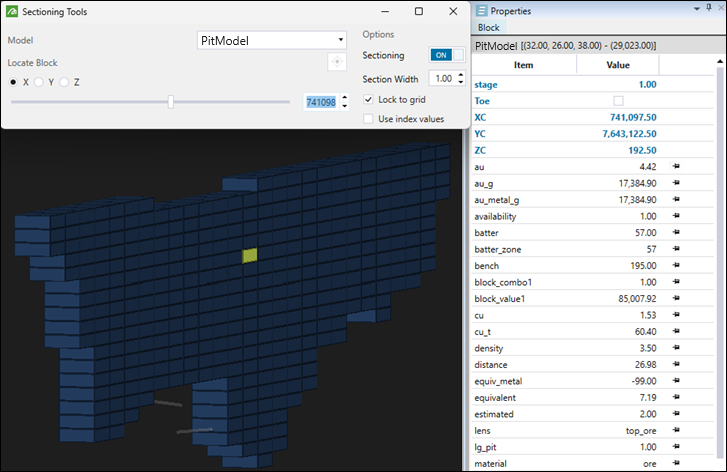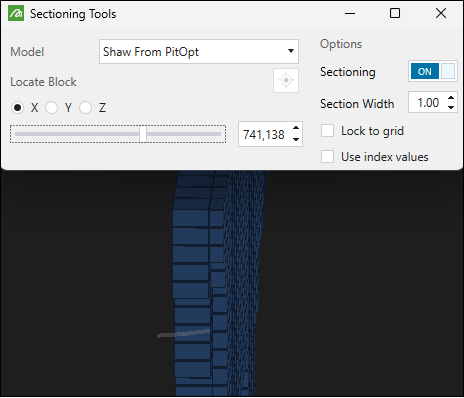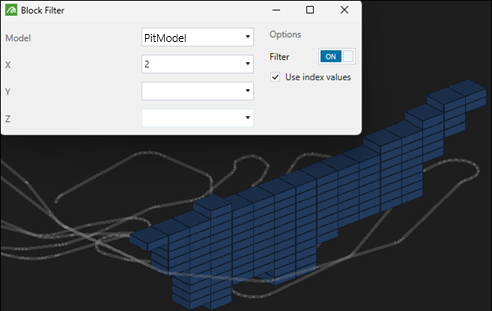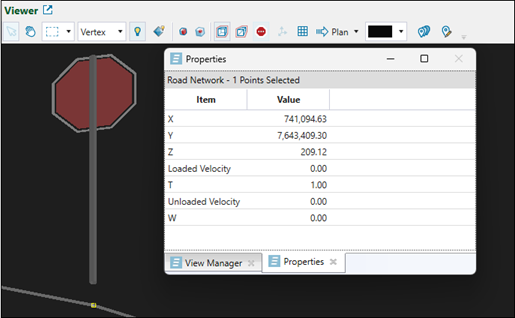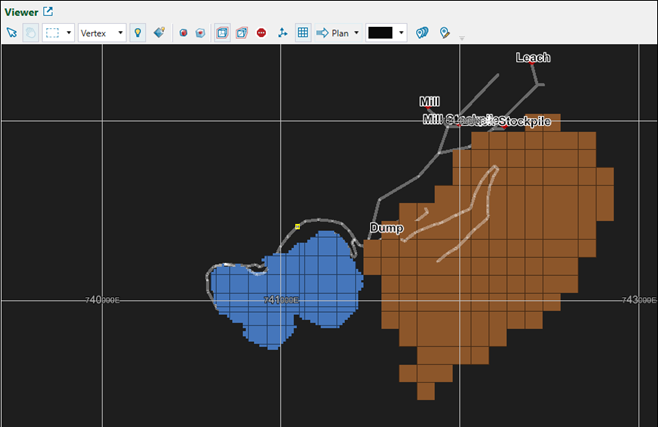Using the Block Model Viewer
Source file: origin-block-models-view.htm
You can view a block model in the following ways:
-
As a part of a setup together with other setup components (for example, road network, waypoints, and other block models). To do so, open the required setup and go to the
 Viewer tab.
Viewer tab. -
Individually as a plain model. To do so, double-click the model in the project explorer.
-
As a part of a schedule result (see Schedule Viewer for more information).
Once opened, there are a number of functions available to customise in the viewer toolbar.
Viewer toolbar
The toolbar in the viewer contains a number of tools that allow you to customise your view and manage the waypoints.
Note: The tools for managing the road networks are only available when you view your model as a part of a setup.

The viewer toolbar is located above the viewer workspace. The following table describes each function available in the toolbar.
|
|
Interactive Mode
Tip: Hold down Alt while in the interactive selection mode to enable viewer navigation in the hands-free selection mode. See Hands Free Mode for more information. Tip: Press Shift to select multiple block groups. |
|
|
Hands Free Mode
|

|
Selection method
|

|
Selection type
|
|
|
Toggle Lowlighting Selection |
|
|
Eye-dome lighting enabled
|
|
|
Section Models
|
|
|
Filter Blocks |
|
|
Orthographic Projection
|
|
|
Perspective Projection
|
|
|
Toggle Stop Signs
Note: The |
|
|
Set centre of rotation to selected object
|
|
|
Turn on coordinate grid in the view
Note: The coordinate grid is only visible in plan view. To re-enter the plan view, click the
|

|
Plan view
|

|
Background colour
|
|
|
Create a waypoint collection
Note: This tool is only available when you view your model as a part of a setup. |
|
|
Waypoint editor
Note: This tool is only available when you view your model as a part of a setup. |
See also: Evolution display settings
Viewer guidelines
Evolution allows you to view Vulcan layers (linework) by dropping Vulcan design database (.dgd.isis) and Vulcan archive (.arch_d) files into the viewer. This creates guidelines that can help you decide where to make solid cuts (see Solid Cuts for more information). For example, if you have files with grade control polygons (marked out regions that group areas of similar grade), you can drop them into the viewer to identify which regions of the pit or on a certain bench should be scheduled.
When you drop a .dgd.isis or .arch_d file from the file explorer, the Import Layers panel will appear.
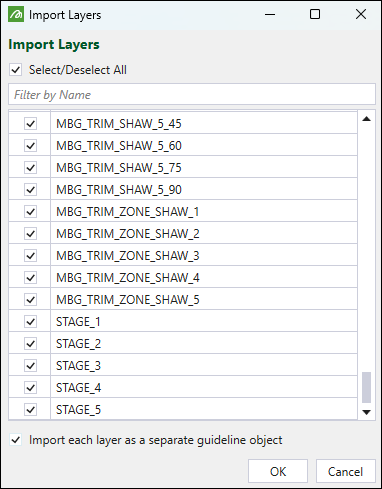
Choose which layers to import by selecting the corresponding checkboxes. The selected layers will be imported into Evolution as a single object, unless you select the Import each layer as a separate guideline object checkbox. In that case, Evolution will create an object for each imported layer, enabling you to customise the way each layer is displayed in the viewer.
After applying the required settings, click OK. The layers you selected will be added to the viewer and project explorer as guideline objects. You can apply the imported guideline objects to any Evolution viewer by dragging and dropping them from the project explorer.
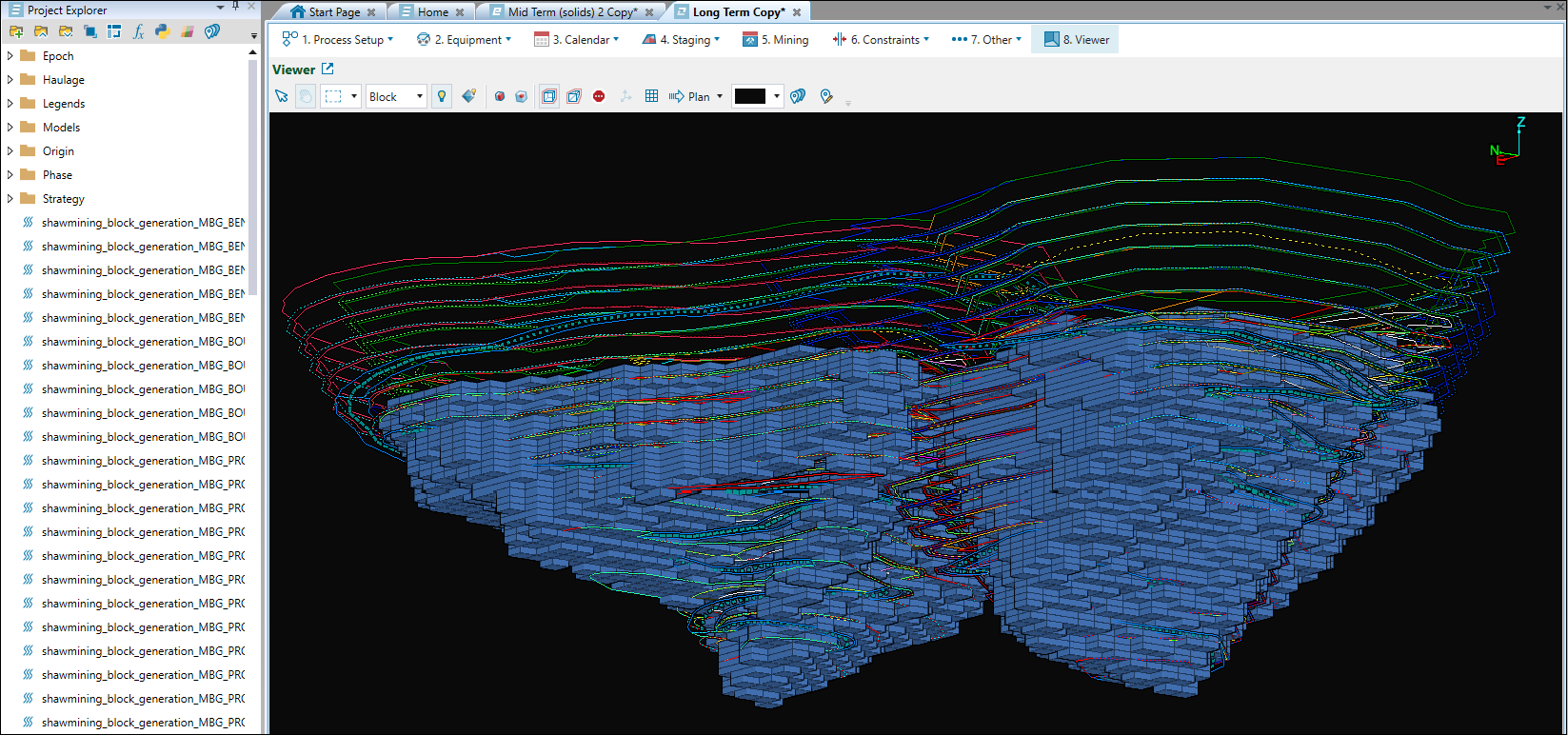
Evolution will also create a ![]() Guidelines category in the View Manager and list the layers under it.
Guidelines category in the View Manager and list the layers under it.
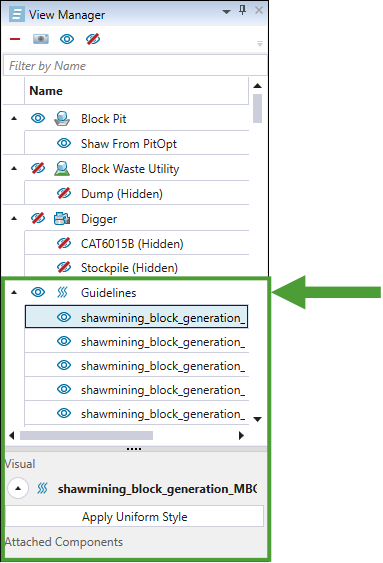
For each imported layer, you can set a uniform colour and thickness for all lines on that layer. To do so, select the object in the View Manager and click the Apply Uniform Style button.
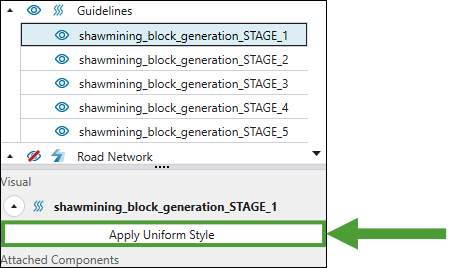
Next, set the line size and choose the required colour from the colour picker menu. Evolution will reflect your settings in the viewer.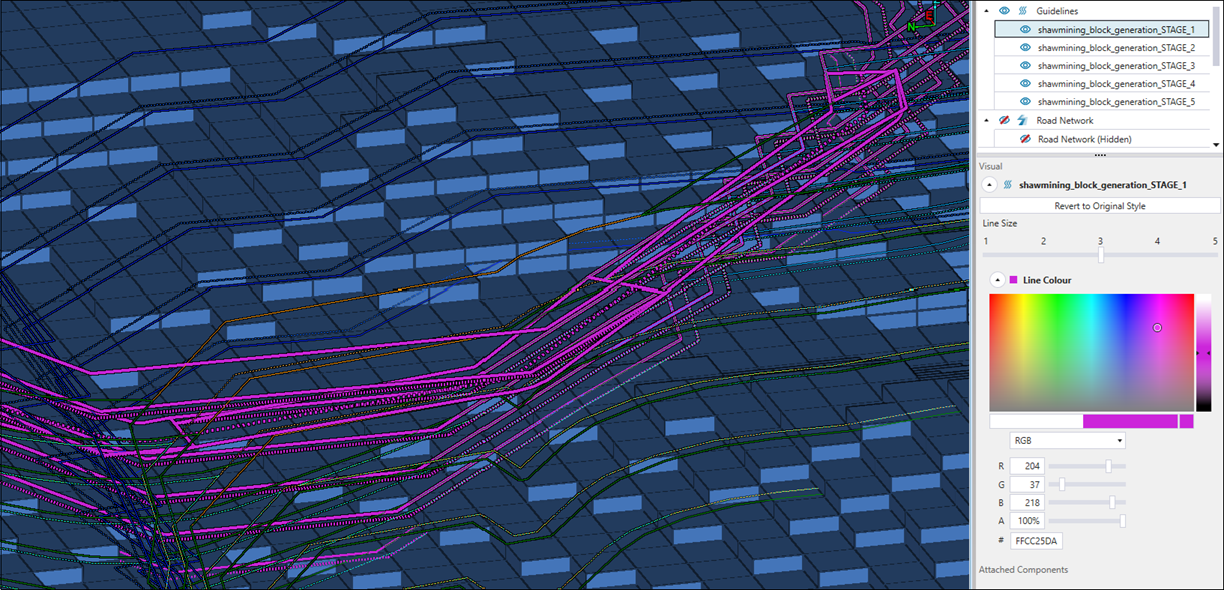
Tip: Click Revert to Original Style to discard the changes that you have made.
See also: View Manager in Origin Blocks, Cut Solids in Epoch, Importing a Dynamic Solids Pit
